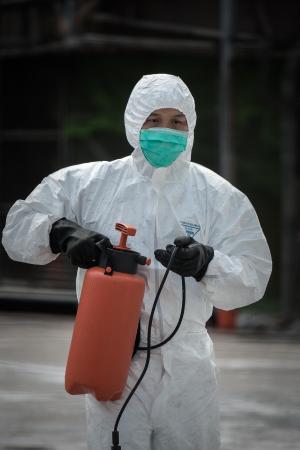The flu-like Severe Acute
Respiratory Syndrome infected 1,800 people and took 299 lives in the
southern Chinese city.
Panic spread, emptying usually busy streets and
restaurants and causing the property market to dive.
But
swift moves to quarantine at-risk residents brought the outbreak under
control, while transforming long-term attitudes to disease and
streamlining the city's alert and response systems.
Eleven
years later, the legacy of SARS can still be seen every day in Hong
Kong.
Many residents don surgical masks at the first signs of a common
cold; disinfectant dispensers are dotted around buildings, and signs
next to elevator buttons boast of hourly sterilisation.
"All this came about after SARS," said Nelson Lee, head of infectious diseases at the Chinese University of Hong Kong.
"At
the time of SARS, Hong Kong had no isolation facilities, or very few --
and in general, the medical profession was not aware of the importance
of infectious diseases. We have come a long way."
Taking no chances in one of the world's most densely-populated cities, authorities set up a government body to coordinate the response to similar crises in the future.
- How well-prepared is Asia? -
Staying
in a four-star hotel, he passed it to international guests and visitors
who eventually helped the disease spread to dozens of countries,
affecting 8,000 people worldwide and killing some 800.
Nearly 350 of the deaths were in mainland China, while Asian neighbours including Taiwan, Singapore and Vietnam were also hit.
Since then, Asia's mechanisms for dealing with infectious disease have been tested several times.
The H5N1 strain of bird
flu has killed more than 400 people, mainly in Southeast Asia, since
first appearing in 2003. Another strain of bird flu, H7N9, has claimed
more than 170 lives since emerging in 2013.
Experts
say the experience of dealing with these viruses stands Asia in
generally good stead should it face an outbreak of Ebola, which has yet
to make it to the continent.
"Generally speaking, the level of readiness is probably more similar to the level of readiness of Europe rather than Africa," said Isabelle Nuttall of the World Health Organization.
Quarantine drills have been held from China and Hong Kong to Singapore and the Philippines, while many Asian countries have tightened airport screening processes.
In
an extreme case, isolated North Korea on Thursday said it intends to
quarantine all foreigners entering the country for 21 days, no matter
their country of origin.
YAHOO NEWS















0 comments:
Post a Comment